Next Edge Biotech and Life Sciences Opportunities Fund – Commentary – March 2022
Mar 31st, 2022
Next Edge Biotech and Life Sciences Opportunities Fund – Commentary – March 2022
March 31, 2021
New cycle growth leaders continue to be resilient
Biotechnology and other long-duration assets sold off sharply into the ides of March, before recovering into month-end. The market continued to favour energy, commodities and large defensive caps, as it has for most of 2022. However, there was a buying panic into mega-cap healthcare companies such as BioPharma and Services as investors sought refuge from interest rates surging to multiyear highs.
While small and midcap healthcare and biotech companies remained under pressure, the Next Edge Biotech and Life Sciences Opportunities Fund’s (the “Fund”) favoured largest holdings continued to thrive under these conditions, primarily because they are already generating substantial revenues or are on the cusp of doing so over the next year, and are also not funding-constrained. Furthermore, important clinical and regulatory hurdles have been surmounted, and their therapies are best-in-class. Four of those core holdings, representing over 16% of the Fund’s portfolio performed as follows during March:
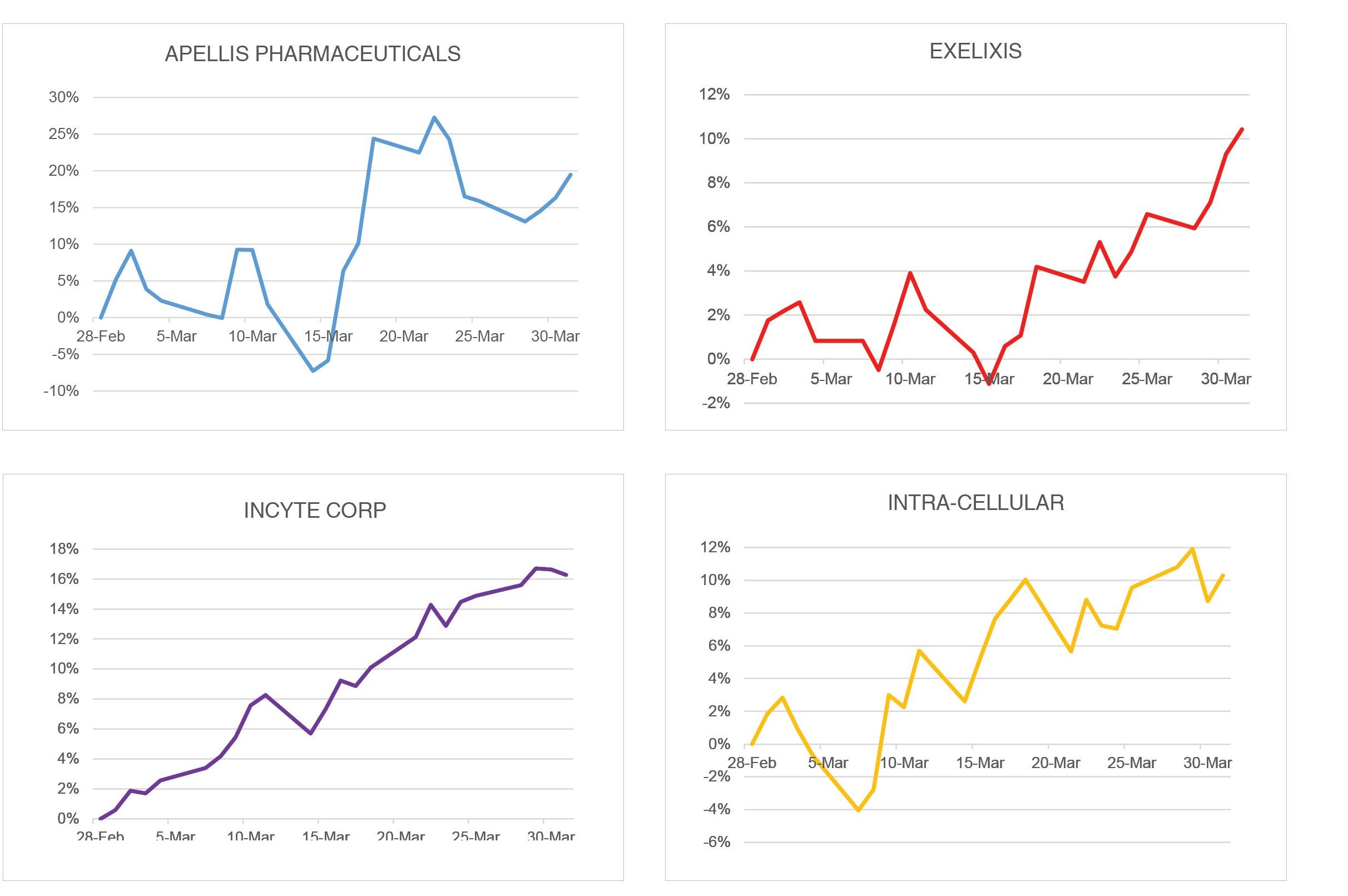
Data: Bloomberg, concept: Next Edge Capital Corp. as of March 2022.
For March 2022, the Fund’s Class A Units declined by -2.72% and the Fund’s Class F Units by -2.63% vs +0.05% for the S&P Biotech Index (^SPSIBI). For the first quarter and year-to-date, the Class A Units declined by -14.18% and the Class F Units by -13.96% vs -19.57% for the S&P Biotech Index. The Fund performed better on a relative basis due to the strong performance in a few of the Fund’s largest midcap holdings, plus the contribution of Index Put Spread hedges and written Call options against a few volatile portfolio holdings.
Collision Course of Biology With A.I. And Computational Mathematics
There are tectonic shifts occurring in biotechnology that will enable never-before-seen advances in life sciences in the decade ahead. And as a result of the historic bear market over the past year, these ground-breaking agents of change, all commercial-stage companies, are available at values -70% to -85% off last year’s highs. Over the past couple of months, the Fund has been on a “shopping spree”, initiating investments in these tech-bio companies that we avoided last year, believing them to be too richly priced. Now the pendulum has swung to the opposite extreme, and we have sprung into action.
In the illustration below, the middle column depicts the path to clinical development of a Therapeutic. The tributaries feeding into that stream are the emerging technologies that increasingly enable and are improving the process of drug discovery and clinical development. This a watershed upheaval unfolding.
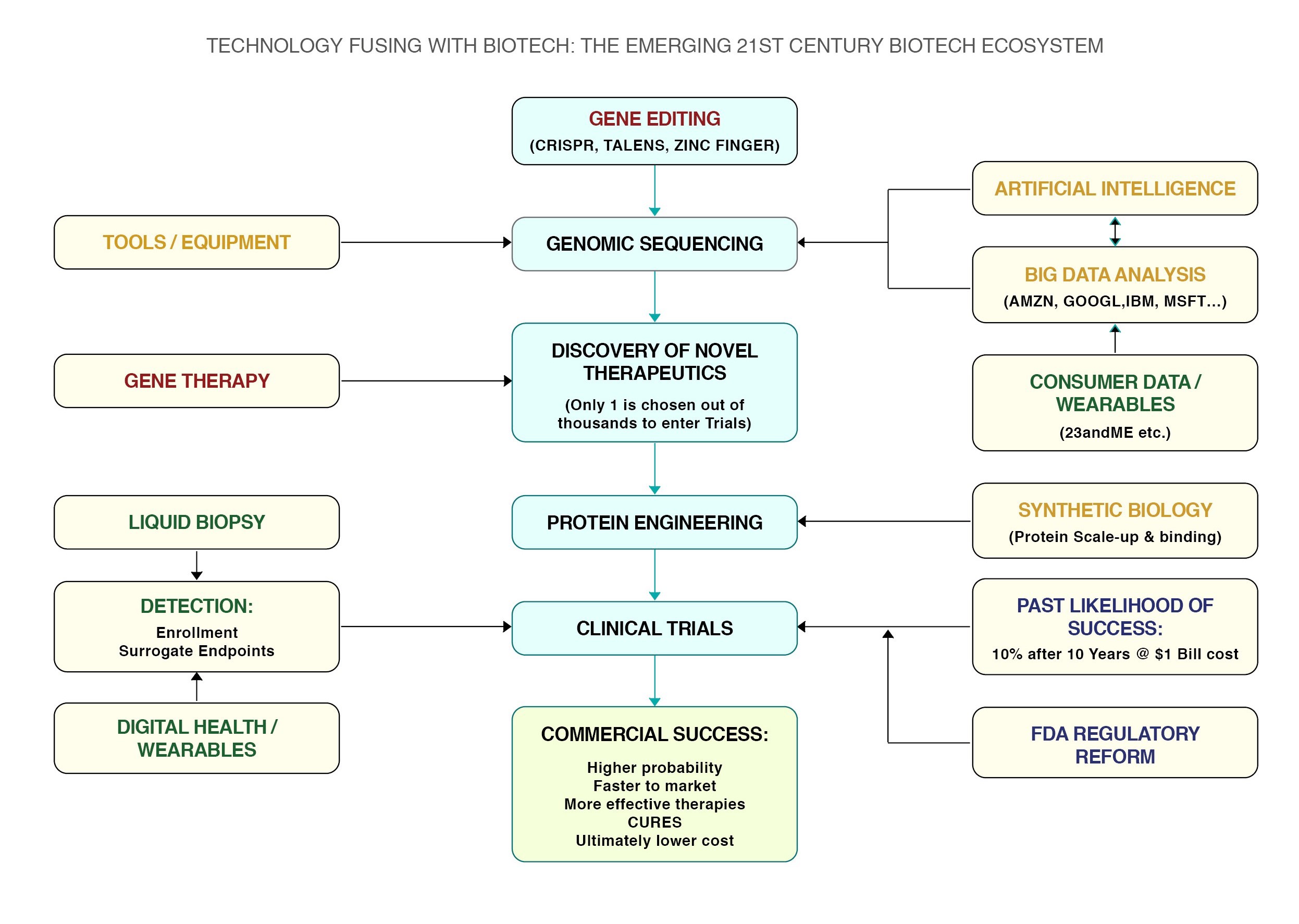
Concept: Next Edge Capital Corp.
For February 2022, the Next Edge Biotech and Life Sciences Opportunities Fund Class A Units declined by -1.52%, and the Next Edge Biotech and Life Sciences Opportunities Fund Class F Units by -1.44% vs -3.98% for the S&P Biotech Index (^SPSIBI) and -4.11% for the large-cap weighted Nasdaq Biotech Index (^NBI). The Fund performed better on a relative basis versus the indices due to strong performance in a few of its large holdings plus the contribution of Index Put spread hedges, which were rolled down and out to bank some of the gains.
Among these innovative tech-bio companies recently initiated and percent decline from 2021’s high:
- A software company with novel, recently FDA-approved A.I. engine to diagnose Dementias (-76%).
- A provider of exhaustive Computational machine learning software to aid drug discovery (-78%).
- A cancer genomics company providing liquid biopsy detection and details on 20,000 genes (-87%).
- Provider of instruments and consumables to analyse gene expressions and CRISPR (-73%)Leading synthetic DNA biotech that reprograms cells to scale up manufacturing (-81%).
- Synthetic biology company that writes DNA on silicon chips to industrialize engineering of biology (-81%).
- Commercializing its game-changing thrombectomy system treating venous embolisms (-48%).
- Next generation, minimally invasive 3D robotic surgery system with 9 degrees of movement (-72%).
- Ultra-sensitive Simoa immunoassay detection of biomarkers such as in Alzheimer’s (-75%).
- Ultra-sensitive Simoa immunoassay detection of biomarkers such as in Alzheimer’s (-75%).
Currently, thousands of molecules are manually designed and screened in assays and tested over about 5 years before a single lead optimized drug is even ready to go into the human testing. What if, instead, billions, not thousands of molecules could be tested in computational assays to determine the desired properties of
1) Potency
2) Selectivity
3) Solubility
4) Clearance
5) Permeability
6) Drug-Drug interactions
7) Synthesizability
8) Toxicity
are fully rather than partially optimized in half that time? Then the cost of drug development declines, the risk of failure declines, the chance of clinical success due to drug effectiveness soars, and therefore the time to commercialization declines. What does that do to the risk/reward of biotech in the years ahead? None of this idiosyncratic optionality is priced in the market. That is the below-the-radar opportunity.
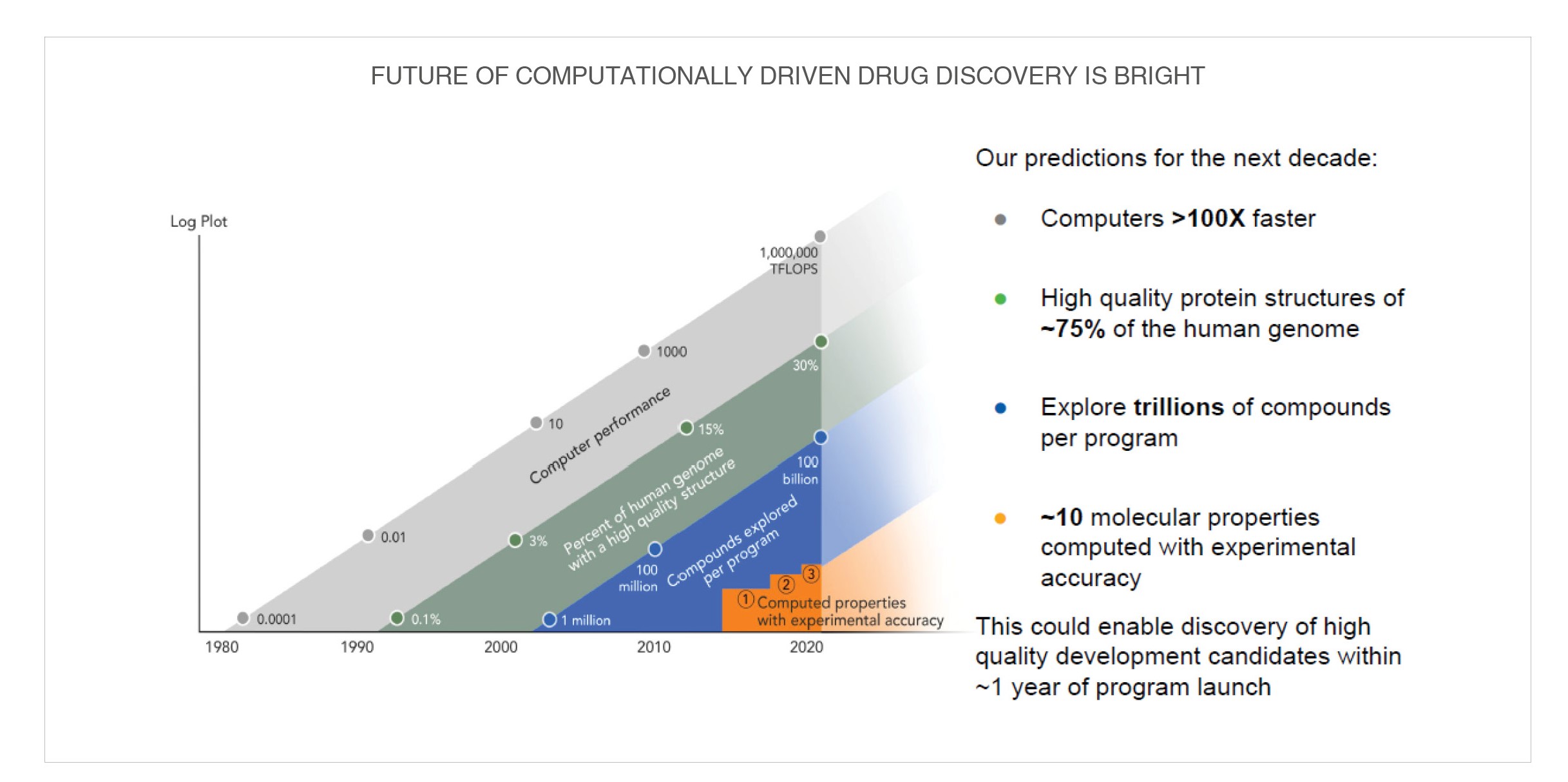
Source: Schrodinger November 2021 Presentation, slide 28.
BioTech is Probing For a Low Near Current Levels
The percent of the +370 companies in the Nasdaq Biotech Index (NBI) trading above their 200-day moving average, or the definition of a bull market, continues to stabilize after declining to the rarified deeply oversold reading below 10% in late January. High-quality large caps weighted heavily in the NBI, and select midcaps, weighted heavily in the Fund, have significantly outperformed the universe of small-cap biotech companies that have declined -70% to -90% over the past year. From the chart below, in aggregate, the sector is at oversold thresholds that in the past have always led to significant rallies and reflects that negative expectations are priced into most companies.
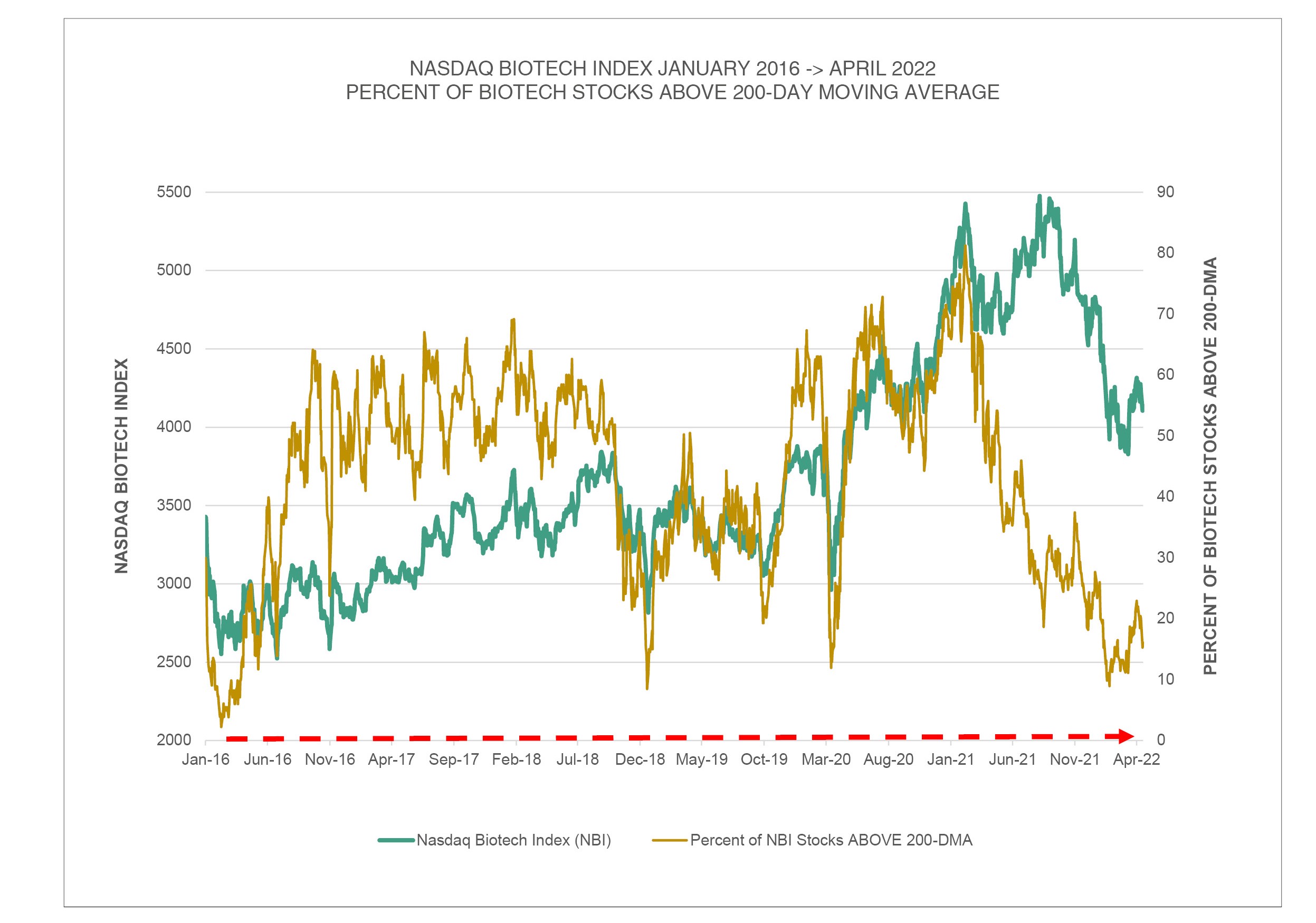
Data: Bloomberg, concept: Next Edge Capital Corp. as of April 19, 2022.
Discussion of Next Edge Biotech and Life Sciences Opportunities Fund
The weighting of US Holdings, Canadian Holdings and cash were virtually unchanged during March. US weight remained at 70.5%, Canadian at 25% and cash declined slightly to 4.5%.
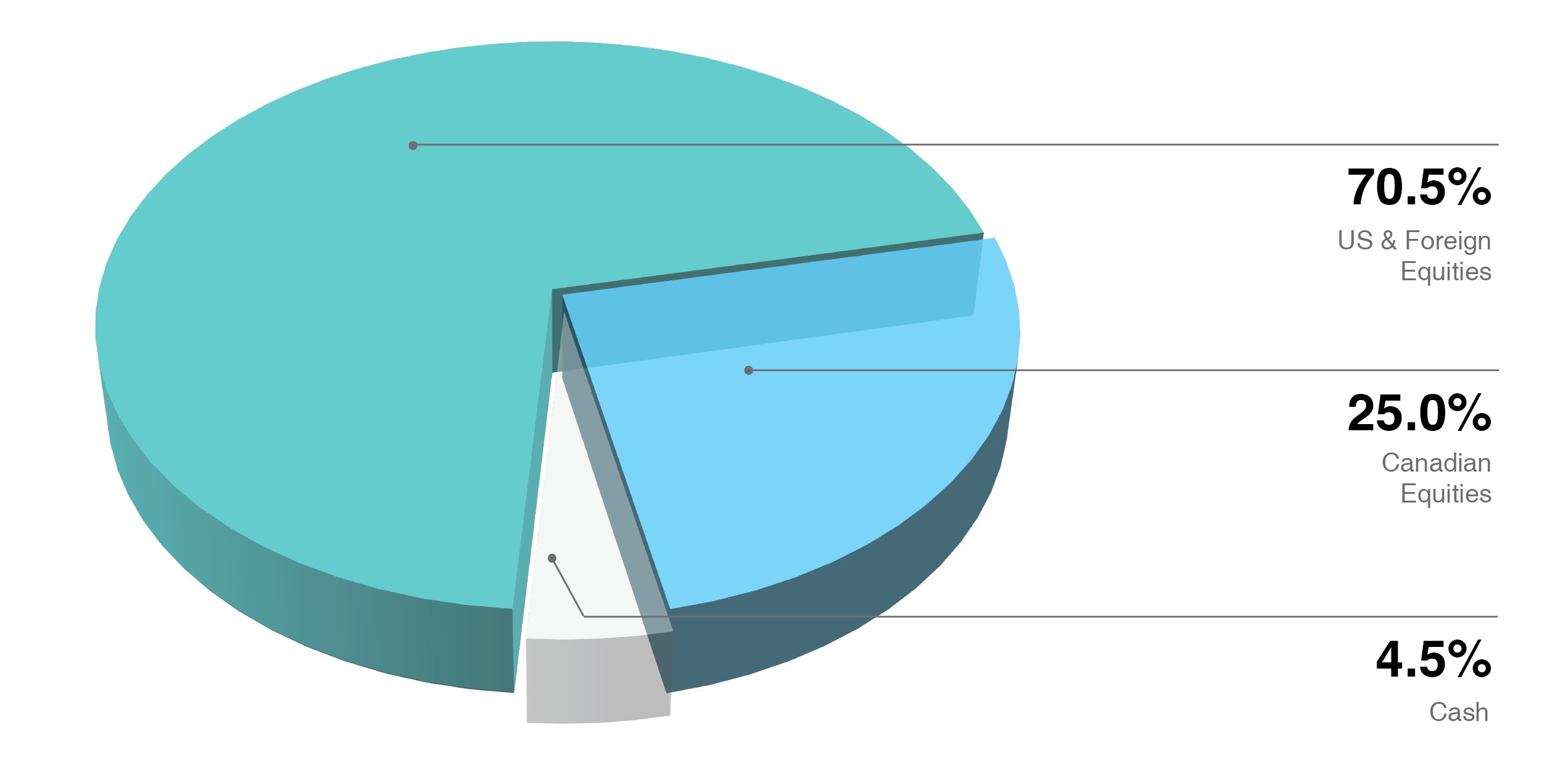
Source: RBC Investor and Treasury Services Inc., Next Edge Capital Corp.
Fund Performance
The Fund had a trading start date of December 21, 2020. As such, only monthly performance returns will be shown for the first year.
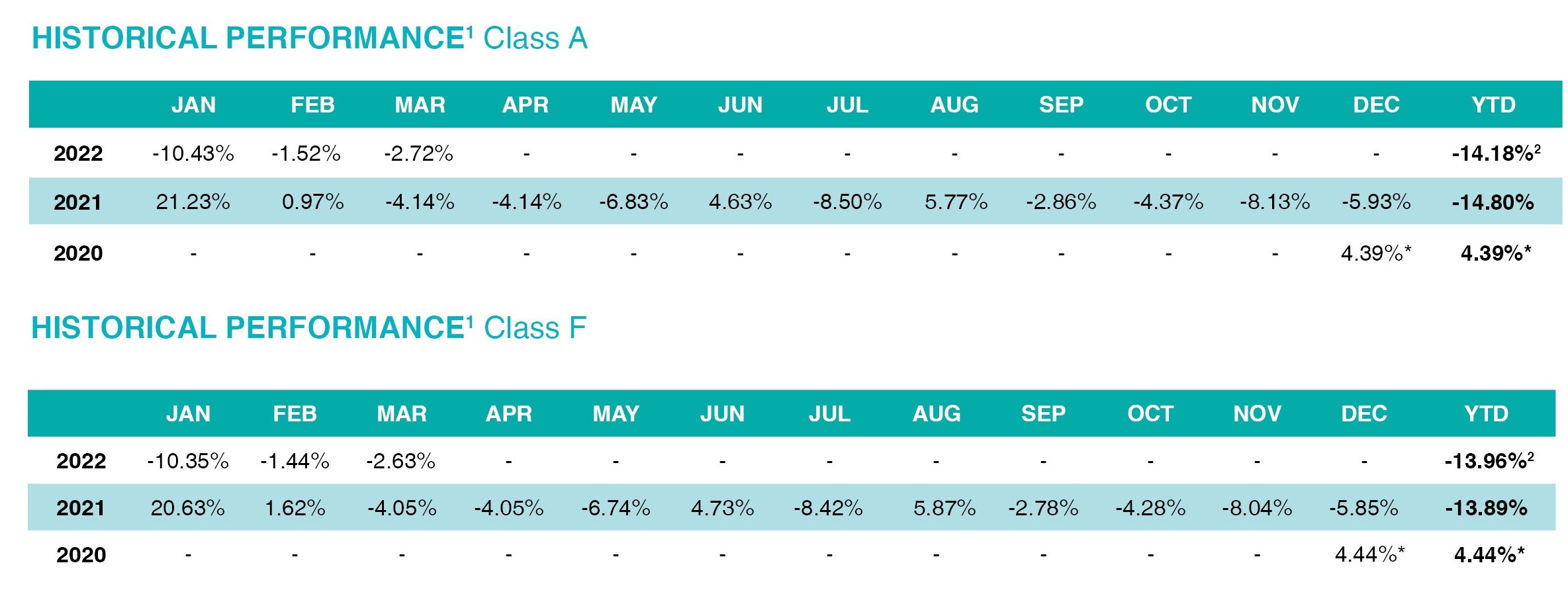
Important Notes
1. Next Edge Biotech and Life Sciences Opportunities Fund returns are net of all fees and expenses associated with Class A Units and Class F Units charged from December 21, 2020. Returns for 2021 and 2022 are unaudited. Therefore, performance statistics containing 2021 and 2022 figures shown in this material are subject to final confirmation. The historical annualized rates of return for the Next Edge Biotech and Life Sciences Opportunities Fund Class A Units as of March 31, 2022 are 1 yr -37.69%, 3 yr N/A, 5 yr N/A, 10 yr N/A, and CARR -18.34%; for Class F Units are 1 yr -37.01%, 3 yr N/A, 5 yr N/A, 10 yr N/A, and CARR -17.50%.
2. Part Year
* Part Month start date December 21, 2020 to December 31, 2020.
The “Next Edge Biotech and Life Sciences Opportunities Fund” or “Fund” means the “Next Edge Biotech and Life Sciences Opportunities Fund”. Capitalized terms not defined in this report are defined as set forth in the prospectus of the Fund (the “Prospectus”). This communication is not, and under no circumstances is to be construed as, an invitation to make an investment in the Fund nor does it constitute a public offering to sell the Fund or any other products described herein. Applications for the Fund will only be considered on the terms of the Prospectus. Each purchaser of the units (the “Units”) may have statutory or contractual rights of action under certain circumstances as disclosed in the Prospectus. Please review the provisions of the applicable securities legislation for particulars of these rights.
Potential investors should note that alternative investments can involve significant risks and the value of an investment may go down as well as up. There is no guarantee of trading performance and past or projected performance is not indicative of future results. Investors should review the Prospectus in its entirety for a complete description of the Fund, its risks, and consult their registered dealers before making an investment.
Any descriptions or information involving investment process or strategies is provided for illustration purposes only, may not be fully indicative of any present or future investments, may be changed at the discretion of the Portfolio Manager and are not intended to reflect performance. The following does not purport to be a complete summary of all of the risks associated with an investment in the Fund. Please see the Fund’s Prospectus for a complete listing and description of the risks associated with an investment in the Fund. The Fund is generally exposed to the following risks: Biotechnology Industry Risk; Borrowing Risk; Counterparty Risk; Credit Risk; Cybersecurity Risk; Derivatives Risk; Equity Securities Risk; ETF Risk; Foreign Currency Risk; Foreign Securities Risk; Interest Rate Risk; Legislation and Litigation Risk; Leverage Risk; Liquidity Risk; Multiple Class Risk; Options Risk; Price Volatility Risk; Repurchase and Reverse Repurchase Transactions and Securities Lending Risk; Short Selling Risk; Stock Market Risk; Substantial Securityholder Risk and Tax Risk.
The Fund is not a trust company and does not carry on business as a trust company and, accordingly, the Fund is not registered under the trust company legislation of any jurisdiction. Units of the Fund are not “deposits” within the meaning of the Canada Deposit Insurance Corporation Act (Canada) are not insured under provisions of that Act or any other legislation.
The information provided herein is for information purposes only and does not constitute a solicitation, public offering, advice or recommendations to buy or sell interests in the Fund, the Portfolio, Units or any other Next Edge Product. Please refer to the Fund’s prospectus for more information on the Fund as any information in this Report is qualified in its entirety by the disclosure therein.
The information contained in this material is subject to change without notice and Next Edge Capital Corp. will not be held liable for any inaccuracies or misprints. The Fund has not been and will not be, registered under the United States Securities Act of 1933, as amended (the “U.S. Securities Act”), or the securities laws of any state of the United States. The Fund may not be offered or sold in the United States or to US persons.
Opinions expressed are those of the author as of the date of this report, are subject to change and may not reflect the opinion of all members of the Company. Some statements contained in this material concerning goals, strategies, outlook or other non-historical matters may be “forward-looking statements” and are based on current indicators and expectations at the date of their publication. We undertake no obligation to update or revise them. Forward-looking statements are subject to risks and uncertainties that may cause actual results to differ materially from those implied in the statements.





